Insight into my project “IoT and Me” 2021 – refrigerator monitoring
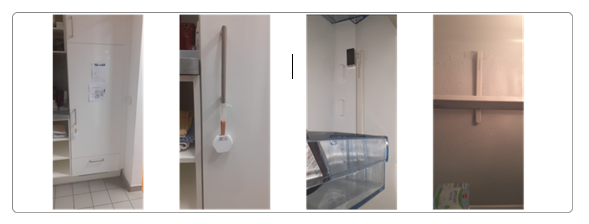
Last modified on 03rd May, 2024
A warm hello everyone
For those who don’t know me yet and haven’t read the blog post about the participants in the current “IoT and Me” competition, I’ll briefly introduce myself again. My name is Miriam Ohlenroth, I’m 19 years old and come from Stutensee-Friedrichstal. I’ve been a trainee at Minol in the field of office management, also known as office communication clerk, for about a year and a half. My hobbies are badminton, longboard riding and drawing.
As part of the “IoT and Me” competition, we (students and trainees of the Minol-ZENNER Group) have the opportunity to experiment and explore with our ideas and imaginations. In addition to a ZENNER IoT GatewayPLUS Smart (for access to the LoRaWAN® network of the Minol ZENNER Connect), the following LoraWAN-capable sensors were made available to us for the implementation of our own IoT use cases: a Sensative Strips Multi-Sensor + Drip, a Sensative Strips Presence and a Browan Tabs object locator. In addition, we were given access to visualization tools such as the B.One Gallery, the ZENNER Datahub and Grafana so that we could read and evaluate the desired values.
In the following, I would like to give you a small, somewhat more in-depth insight into my competition project.
My use case: refrigerator monitoring with LoRaWAN®

Since my colleagues and service partners often like to treat themselves to a morning coffee, I saw this fridge monitoring use case as a good idea. But not only that convinced me to use the sensors on the fridge, but also the topics such as wasting food and money, which I was able to learn about in religious education class. That’s why I decided on this idea to take a step in the right direction.
I did this by using functions such as the Tabs Sensor to keep track of the expiry date of the food, for example. Of course, I also want to avoid the side effects of incorrect positioning or behavior as much as possible. This could lead to the formation of droplets that become ice droplets due to the low temperature. But how do I notice that ice drops have formed? To do this, two functions of the multi-sensor are combined, one is leak detection and the other is temperature detection. With the temperature I can determine how low it has dropped and at what level my drops become ice. With the leakage I can find out whether dewdrops have already formed. An overview of the sensors and functions used can be found below.
Fastening/installation of the sensors



When attaching the sensors, it was important to note which sensors are needed for which function and where it would be most clever to attach the sensors. So I attached my multisensor to the back wall of the fridge, I attached my presence sensor between the door and the inside wall of the fridge, and I tied the tabs to the door handle of the fridge. You can see that in the images above.
Which sensors and which functions do I use for what?
Object Locator tab:
Press function of the button
- Food expiry date reminder
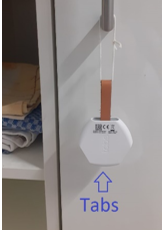
Strips Multi Sensor + Drip:
temperature & leakage
- Ice drop detection
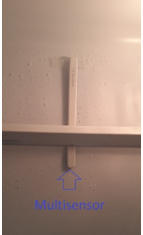
Strips Multi-sensor + Drip/Presence sensor:
Illumination Sensor & Motion Sensor
- for possible replacement of the lamp or observation of the performance
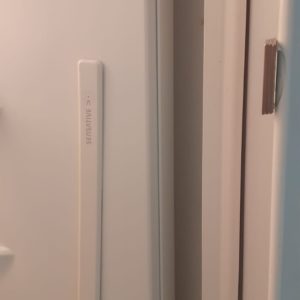
Strip Presence:
motion sensor
- As a warning if the door is open for more than 1 minute
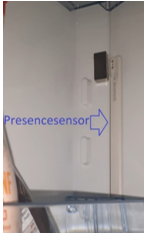
Which sensor functions am I not using and why?
I don’t use the motion sensor on the multi-sensor because I attach the multi-sensor’s leakage to the inside back wall of the refrigerator to catch the dewdrops. But in order to keep the ongoing door movements under control, I convert the presence sensor, which is actually intended for the presence of the respective colleague, into a motion sensor. However, I leave out the GPS function for the tabs sensor, as it is of no use to me in the project.
My biggest challenges in the implementation
The two biggest challenges for me were the time settings of the sensors on the one hand and the problem of receiving too many messages by email on the other. Again, I overcame this by learning more about the system and observing the readings from the sensors. So I got significantly fewer messages per day, which were limited to 6 messages.
my first steps
I first started installing and setting up my sensors. In addition, I found out more about the refrigerator’s weak points, as well as how I could possibly combine the sensors. After that I started to implement my ideas and to evaluate the values of the sensors that were transferred to the tool (Grafana) and thus also to define my notifications.
My application tools for visualization
The tools I used for my project included Grafana, to recognize my values in the diagram and of course to adjust small details, such as the temperatures or to store my email address. Furthermore, I took advantage of the great opportunity here in the community to keep up to date with the latest programming or assistance, as well as the latest blog posts and to exchange ideas with other participants.





Short interview with further insights
In this blog post you have already learned a lot about my sensors and my work as well as about me. But how did I fare overall in the project and how did I get on with the sensors? You will find out this and more in a short interview.


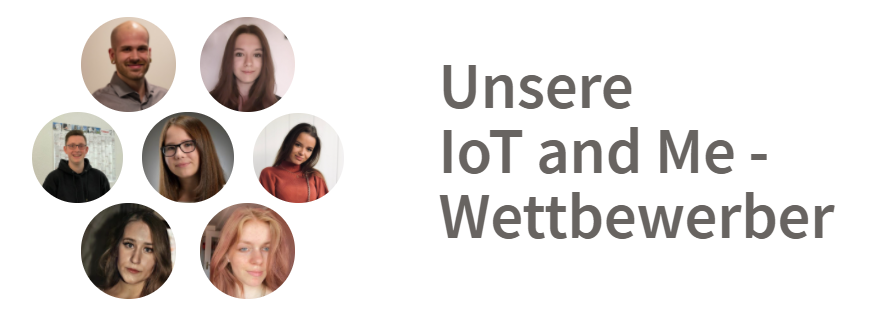
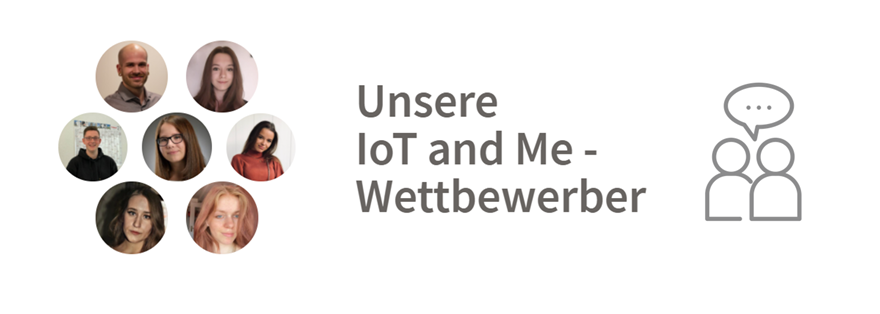
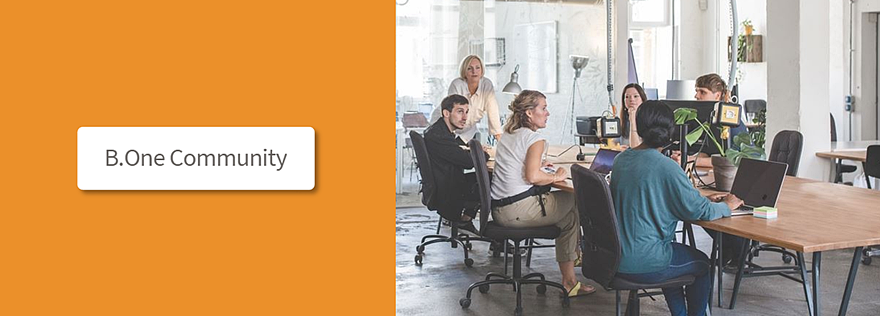



Responses